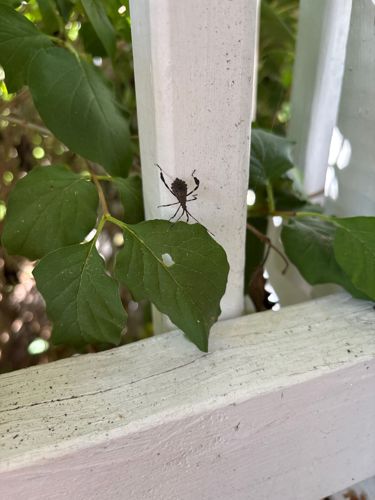Leaf-footed Bug nymph (likely Acanthocephala or Leptoglossus species)
Scientific Name: Could be various species within the Coreidae family, such as Acanthocephala femorata or Leptoglossus phyllopus. A definitive species identification without an adult specimen and clearer morphological details is difficult.
Order & Family: Order: Hemiptera, Family: Coreidae (Leaf-footed Bugs)
Size: Nymphs vary in size as they grow through instars, typically ranging from a few millimeters to about 2 cm (0.8 inches) before reaching adult size (which can be up to 3 cm or 1.2 inches for some species).

Natural Habitat
Leaf-footed bugs are commonly found in gardens, orchards, agricultural fields, and natural areas where host plants are abundant. They typically inhabit herbaceous plants, shrubs, and trees.
Diet & Feeding
They are herbivorous, feeding on the sap of various plants, including fruits, nuts, and ornamental plants.
Behavior Patterns
Nymphs and adults feed on plant sap. They are typically active during warmer months. Nymphs often have a spiky, somewhat camouflaged appearance to mimic detritus or insect predators like spiders to avoid predation. Adults are strong flyers and can be attracted to lights at night.
Risks & Benefits
Risks: As pests, they can cause significant damage to crops by feeding on fruits, nuts, and seeds, leading to deformities, premature drop, or reduced yield. Benefits: In natural ecosystems, they play a role in the food web as a food source for birds and other predators, and their feeding can contribute to natural plant thinning, though their pest status often outweighs these benefits in cultivated areas.
Identified on: 8/28/2025